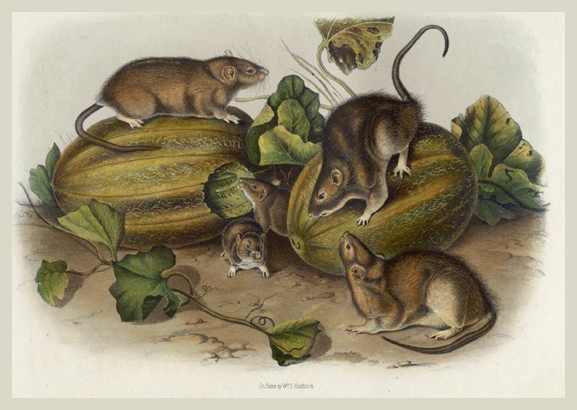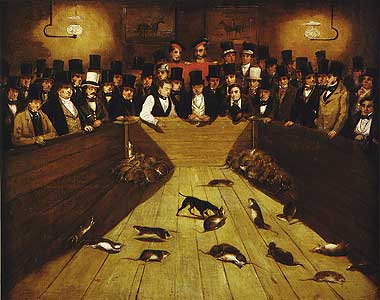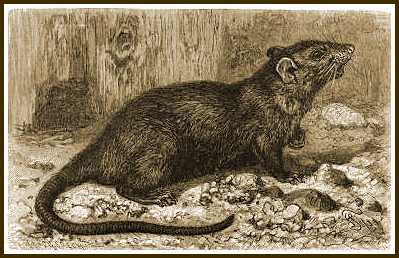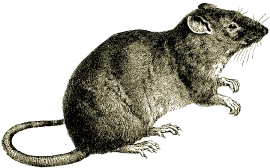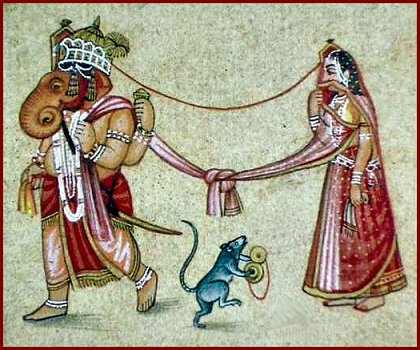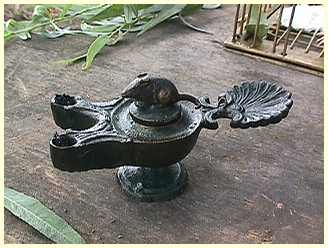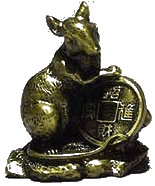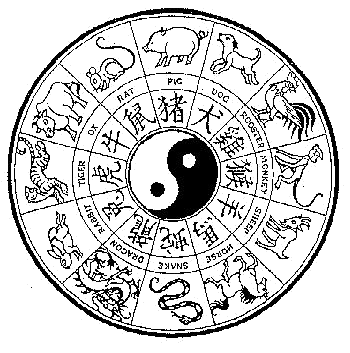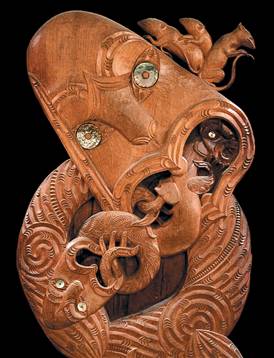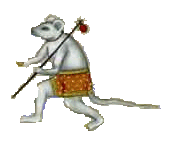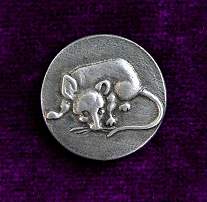Rat History
|
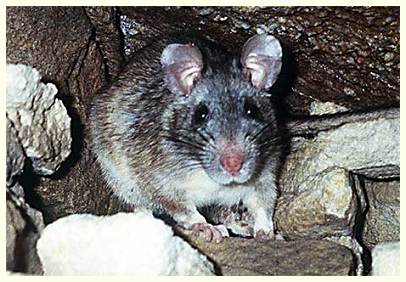 Allegheny Woodrat
Neotoma magister
New York Status: Endangered
Federal Status: Not Listed
Description
Although the name woodrat is branded with negative connotations, this species is indeed an interesting and handsome animal, looking more like an oversized version of its close cousin the white-footed mouse than the European animal that haunts our cities and refuse areas. It is the second largest member of the native North American rats and mice (subfamily Sigmodontinae) and weighs up to a pound, roughly the size of a grey squirrel. Allegheny woodrats measure approximately 16 inches long, half of which is tail. The majority of its body is brownish-grey in color, while the undersides and feet are white. Woodrats have large eyes, naked ears and long vibrissie (whiskers) which when pulled back will reach the shoulder. The most visible characteristic which sets the Allegheny woodrat apart from Old World rats is its tail. The tails of European rats are naked or slightly hairy with the skin clearly visible beneath. The tail of the Allegheny woodrat is completely covered with hairs approximately one-third of an inch long and is prominently bicolored; nearly black above and white below.
Confusion over the identity of the animal can be resolved on closer inspection. The molars of the woodrat are shaped in prismatic folds while those of the norway rat are tuberculate. Norway rats also have 12 mammae that extend from between the hind legs to the forelegs. Woodrats have just four mammae, which are located between the hind legs.
Allegheny woodrats have an agreeable disposition around people and are generally docile when handled, and easily captured in live traps. When captured they are usually calm, and often thump their hind feet in response to perceived threats. Woodrats are remarkably unafraid when free ranging and are often in no hurry to head for cover once released. We once watched a woodrat take bait containers from our trapping pack, and have heard of animals trying to remove buttons from a person's shirt and drag away the blanket of a sleeping camper.
Woodrats can be very fierce around their own kind. Many sport battle scars from unwelcome encounters and can be killed if escape is not possible.
Life History
Woodrats are generally nocturnal. They scurry about in sparsely vegetated areas of boulders and crevices making use of bare travel ways and labyrinths to travel silently and securely throughout their domain. They are predominantly vegetarians feeding on a wide variety of fruits, nuts, berries, and green plant material. They lay in stores of dried green vegetation under protective cover of ledges, folding or cutting long stemmed herbaceous growth into convenient lengths for carrying. Allegheny woodrats accumulate substantial amounts of hard mast within the rocks for winter use both in piles and scattered about the nest site. The acorns of red oak seem particularly desirable when they are available. In the course of normal activity woodrats rarely travel more than a few hundred feet from the center of their territory, although dispersing animals can travel miles before finding a new home. They appear to patrol the borders of their territories regularly and are well aware of the activities of their neighbors. Compared to other rodents, woodrats are not prolific breeders averaging one to three young per litter. Under ideal conditions they can produce three litters annually. The young are born after a gestation period of 30 to 37 days and are weaned within a month. Woodrats have been known to survive for nearly three years in the wild and considerably longer in captivity.
The nests of Allegheny woodrats are made of finely shredded bark and similar materials. They are roughly 10 inches in diameter and generally open topped. Quick retreat appears to be the preferred defensive strategy as they tend to build nests in well protected sites with multiple avenues of escape. In some instances researchers have found dried leaves placed around the nest on likely approach routes that appear to act as alarms to warn the residents of approaching danger. Nest are usually associated with an accumulation of sticks. We have seen active sites containing so few sticks that they could nearly be discounted as debris that filtered down through the boulders. Some sites in more exposed locations have accumulations of a bushel or more.
Like their western counterparts, which are often called pack rats, the Allegheny woodrat often collects environmental oddities of all descriptions to decorate their nest site and middens. It is not unusual to find bits of bones, human rubbish, or even animal feces within and around the nest site.
Distribution and Habitat
Although it is the northern limit of the species range the Allegheny woodrat has a long history in New York. Researchers have found woodrat bones over 20,000 years old as far north in the Hudson river valley as Albany. In historical times records of woodrats have been restricted to accumulations of large talus boulders throughout the Hudson Highlands and Shawangunk mountains of southeastern New York, east to the Hudson River and south to the New Jersey border.
As recently as the mid 1960's the woodrat could be found wherever these large boulders accumulated in layers deep enough to form complex systems of passageways. By the mid 1970's naturalist Dan Smiley of Mohonk, New York was the first to notice that the Allegheny woodrat was in decline in the state. By 1980 biologist knew of only 5 extant sites, the last of which became extirpated in 1987.
Efforts to understand the cause of the decline began in 1990 when DEC biologists captured thirty woodrats that had been captured in West Virginia, radio collared and released each near Mohonk, New York at two formerly occupied sites. Within six months all of the animals at one site had perished; within a year the remaining animals were gone. Including offspring, biologists monitored 52 animals of which just twelve carcasses were recovered in good condition for examination. In 11 of 12 cases the animal had been killed by a parasite of the raccoon called the raccoon roundworm (Balyisascaris procyonis). The eggs of the parasite are contained within raccoon feces and contaminate the soil when the feces decompose. Woodrats walking across raccoon latrines are probably infected when they groom or when they carry intact feces to their nest sites. Because raccoons are often attracted to the same rocky sites preferred by woodrats an increase in raccoon numbers puts woodrats at great risk of infection. When coupled with the woodrat's "pack rat" behavior of collecting feces, the increase in raccoon numbers that we have experienced in recent decades has spelled doom for the woodrat in New York.
Status
The existence of woodrats is easily confirmed by the presence of latrines. Latrines are comprised of woodrat feces each of which is roughly .5 inches or slightly less in length and .2 inches in diameter. There may be as few as a handful or enough to fill several quart containers at a single site. When looking for latrines it is most productive to search the largest boulders in a talus field for the most spacious, room-like settings that are protected from the elements. Look on flat, level, surfaces. Latrines in protected sites can exist long after the woodrats are gone. Some we have examined still contain many feces nearly 20 years after the animals have disappeared.
Management and Research Needs
For perhaps the first time in thousands of years the Allegheny woodrat no longer haunts the cliffs of southeastern New York. Their chance of returning appears bleak at this time as it would seem to require a substantial and long term decline in raccoon numbers.
Given the ability of raccoons to thrive near human development, our endless inroads into rural landscapes and trends away from raccoon hunting and trapping, we have unintentionally stacked the deck against this harmless resident of the rocks. Research in areas where the animals still exist, or perhaps further experimental research in New York, might shed additional light on the woodrat's problems but we do not now see solutions on the horizon.
Additional References
Whitker, J. O., Jr. and Hamilton, W. J. 1998. Mammals of the Eastern United States. Cornell University Press, Ithaca and London. 583pp.
Wiley, R. 1980. Neotoma floridana. Mammalian Species. The American Society of Mammalogists. No. 137, pp. 1-7.
For additional information contact:
Endangered Species Unit
NYSDEC
625 Broadway
Albany, NY 12233-4754
.
|

copyright 2002 , Jim & Beth Boyle, All Rights ReservedNo part of this website may be used for any purpose ( including using images ) without written consent from The Rams Horn
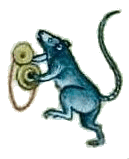
opyright 2002 , Jim & Beth Boyle, All Rights ReservedNo part of this website may be used for any purpose ( including using images ) without written consent from The Rams Horn
....................................................................................................................................................................................................................................................................................................................................................................................................................................................................................................................
